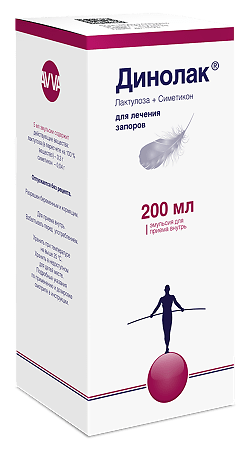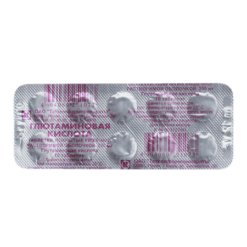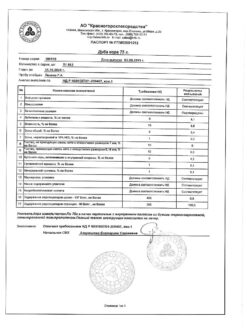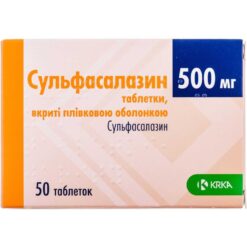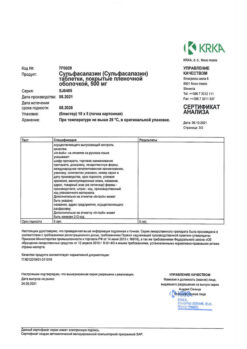No products in the cart.
Dinolak, emulsion 200 ml
€11.91 €9.93
Description
Pharmacotherapeutic group:laxative
ATX code: AO6AD61
Pharmacological properties
Lactulose is a synthetic disaccharide composed of galactose and fructose. Humans do not have hydrolases capable of breaking the disaccharide down to the corresponding monosaccharides. This is why when taken orally lactulose is not metabolized, is not absorbed in the stomach and small intestine and enters the large intestine unchanged.
Lactulose is fermented to monosaccharides and then to short-chain carboxylic acids under the influence of disaccharidases of the microflora of the large intestine. Bacterial transformation of lactulose leads to a decrease in the pH of the intestinal contents, accumulation of short-chain fatty acids and increased peristalsis.
Short-chain carboxylic acids decrease the pH in the colon, which is accompanied by increased peristalsis and suppression of proteolytic microflora growth. Rapid adsorption of short-chain fatty acids in the distal parts of the colon improves absorption of water, sodium and other electrolytes.
As a result, lactulose has a laxative effect and normalizes bowel function while stimulating the growth and reproduction of normal intestinal microflora (bifidogenic factor).
Extracted from the body – with intestinal contents; only 3% of the drug are excreted by the kidneys.
Simethicone is a product with foaming properties. When taken orally it is not absorbed in the digestive tract and is eliminated from the body unchanged. By reducing the surface tension at the interface, it hinders the formation and promotes the destruction of gas bubbles in the contents of the gastrointestinal tract. The released gases can be absorbed by the intestinal walls or excreted from the body. It reduces the feeling of discomfort in the abdomen, sometimes accompanying the action of lactulose.
Indications
Indications
Constipation, regulation of stool in case of hemorrhoids, the need for surgery on the colon and perianal area, Hepatic encephalopathy (hyperammonemia) in adults: treatment and prevention of hepatic coma/precoma. Normalization of intestinal activity. Treatment and prevention of dysbiosis of various etiologies. Restoration of normal intestinal flora after antibiotic therapy.
Pharmacological effect
Pharmacological effect
Pharmacotherapeutic group: laxative
ATX code: AO6AD61
Pharmacological properties
Lactulose is a synthetic disaccharide consisting of galactose and fructose. Humans do not have hydrolases capable of breaking down disaccharides into the corresponding monosaccharides. Therefore, when taken orally, lactulose is practically not metabolized, is not absorbed in the stomach and small intestine, and enters the large intestine unchanged.
Under the influence of disaccharidases from the microflora of the large intestine, lactulose is fermented to monosaccharides and then to short-chain carboxylic acids. Bacterial transformation of lactulose leads to a decrease in intestinal pH, accumulation of short-chain fatty acids and increased peristalsis.
Short-chain carboxylic acids reduce the pH level in the colon, which is accompanied by increased peristalsis and suppression of the growth of proteolytic microflora. Rapid adsorption of short-chain fatty acids in the distal colon improves the absorption of water, sodium and other electrolytes.
As a result, lactulose has a laxative effect and normalizes intestinal function, stimulating the growth and reproduction of normal intestinal microflora (bifidogenic factor).
Excretion from the body – with intestinal contents, only 3% of the drug is excreted by the kidneys.
Simethicone is a product with antifoaming properties. When taken orally, it is not absorbed in the digestive tract and is excreted unchanged from the body. By reducing the surface tension at the interface, it impedes the formation and promotes the destruction of gas bubbles in the contents of the gastrointestinal tract. The gases released during this process can be absorbed by the intestinal walls or excreted from the body. Reduces the feeling of discomfort in the abdominal area that sometimes accompanies the action of lactulose.
Special instructions
Special instructions
If abdominal pain of unknown etiology occurs before starting to take the drug or if there is no therapeutic effect a few days after starting the drug, you should consult your doctor. In children, during drug therapy, a disorder of the bowel movement reflex may occur.
Periodic monitoring of the concentration of electrolytes in the blood plasma should be carried out during long-term use of high doses of the drug (during the treatment of hepatic encephalopathy), especially in elderly patients.
Please note that the drug may contain small amounts of bound sugars (for example, lactose, galactose, fructose). In the treatment of hepatic (pre)coma, high doses of the drug are usually used, and its sugar content should be taken into account in patients with diabetes mellitus.
When treating children, laxatives should be used in exceptional cases and under medical supervision.
Impact on the ability to drive vehicles and machinery
The use of the drug Dinolak® does not affect the ability to drive vehicles and machinery, or perform other work that requires increased concentration and speed of psychomotor reactions.
Active ingredient
Active ingredient
Lactulose, Semiticon
Composition
Composition
100 ml of emulsion contains:
Active substances:
Lactulose (calculated as 100% substance) – 66.0 g,
Simethicone – 0.8 g;
Excipients:
Ascorbic acid – 0.125 g,
Povidone K-90 – 1.2 g,
Povidone K-17 – 0.8 g,
Colloidal silicon dioxide (Aerosil 380) – 0.45 g.
5 ml of emulsion contains:
Active substances:
Lactulose (in terms of 100% substance) – 3.3 g,
Simethicone – 0.04 g;
Excipients:
Ascorbic acid – 0.00625 g,
Povidone K-90 – 0.06 g,
Povidone K-17 – 0.04 g,
Colloidal silicon dioxide (Aerosil 380) – 0.0225 g.
Pregnancy
Pregnancy
The drug Dinolak® can be used during pregnancy and breastfeeding.
Contraindications
Contraindications
Galactosemia, intestinal obstruction, perforation or risk of perforation of the walls of the gastrointestinal tract, intolerance to fructose, galactose, lactase deficiency, glucose-galactose malabsorption, hypersensitivity to the components of the drug, acute inflammatory diseases of the gastrointestinal tract (ulcerative colitis, Crohn’s disease), abdominal pain of unknown origin (for example, suspected appendicitis).
With caution
Rectal bleeding of unknown etiology, colostomy, ileostomy, diabetes mellitus.
Side Effects
Side Effects
If increased doses of the drug are used during long-term treatment of hepatic encephalopathy, the patient may develop disturbances in water and electrolyte balance, which can manifest itself in the form of weakness, increased fatigue, dizziness, headache, nausea, myalgia, arrhythmias.
Gastrointestinal disorders:
Very common (>1/10): diarrhea.
Common (>1/100, <1/10): nausea, vomiting, abdominal pain.
When used in children, a similar safety profile is expected compared to that in adults.
Interaction
Interaction
Antacids and antibiotics active against lactobacilli and bifidobacteria (neomycin, clindamycin, rifaximin) reduce the effect of lactulose.
With simultaneous use of the drug with tiside and loop diuretics, glucocorticosteroids, amphotericin B, an increase in potassium excretion is possible; with drugs that cause constipation (opiates, aluminum hydroxide) – the effect of lactulose may be weakened; with cardiac glycosides – their pharmacological action may be enhanced.
Overdose
Overdose
In case of overdose, abdominal pain and diarrhea may occur, which requires dose adjustment.
Storage conditions
Storage conditions
At a temperature not exceeding 25 °C. Keep out of the reach of children.
Shelf life
Shelf life
3 years.
Do not use after expiration date.
Manufacturer
Manufacturer
ABVA RUS, Russia
Additional information
| Shelf life | 3 years. Do not use after the expiration date. |
|---|---|
| Conditions of storage | At a temperature not higher than 25 ° C. Keep out of reach of children. |
| Manufacturer | Avva Rus, Russia |
| Medication form | oral emulsion |
| Brand | Avva Rus |
Related products
Buy Dinolak, emulsion 200 ml with delivery to USA, UK, Europe and over 120 other countries.

